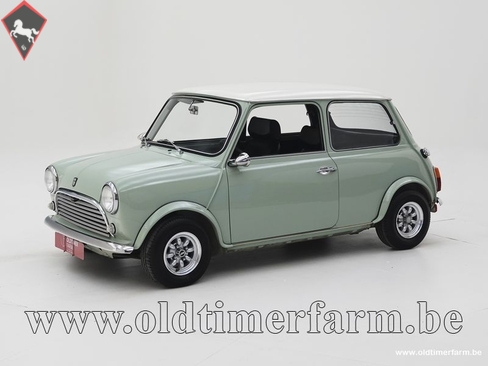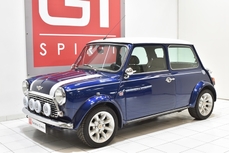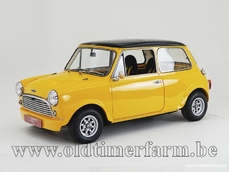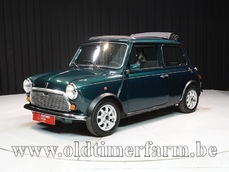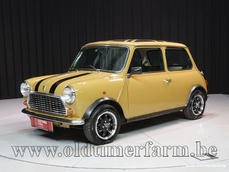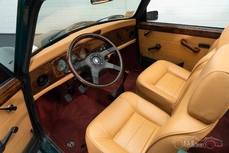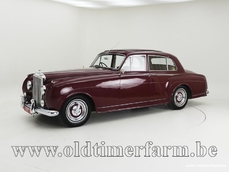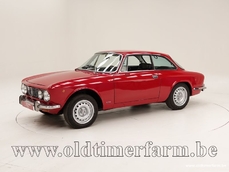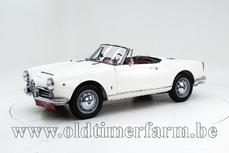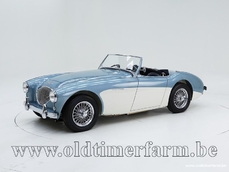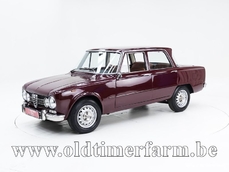Mini 1300 '81 1981
General description :
Very good pricing With valuation report; transparent 115 hp on the crank, engine modified to modern standards Comes with workshop manuals and booklets The Mini, a small car with a big story. In 1959, British car manufacturer British Motor Corporation (BMC) released the Mini, it is obvious that they had a clear goal in mind: releasing a small city-fit car with a cute design. Thanks to The Beatles and its starring in countless famous films, the car has acquired an iconic status over the decades. It was Alec Issigonis, a British-Greek car designer that worked for BMC, who gave birth to the Mini. He had a clear goal in mind: to create an affordable and fuel-efficient car that is efficient and light-steering in narrow British city streets. This approach, along with the playful design, created a true hype among young people. The Mini also became extremely popular with influential people, to the point that all members of The Beatles - John Lennon, Paul McCartney, George Harrison, and Ringo Starr - proudly show off their Minis. In 1969, the car takes on the leading role in the film The Italian Job, in which bank robbers used a Mini as a getaway car. Also Mr. Bean’s car is a lime green 1977 Mini, which emphasizes his clumsiness in the best way possible. Initially, the Mini was manufactured in various finishes, such as a sedan, a station wagon, a van, and even a pickup truck. Those finishes never really became fancied among the crowd. Also, in the 1980s, the Mini began losing its fame due to fierce competition from other car brands. This caused a harsh financial crisis in 1986 at British Leyland - the former BMC that also own Jaguar, Rover, Triumph, and MG. They even decide to restructure and privatize the company and from that moment on Rover Group was born. In 1994, Rover Group sells Mini to BMW, which seven years later, in 2001, launch a refined version of the Mini. Nowadays BMW still produce the Mini – baring its British identity in mind – and it is available in various finishes: a convertible, a fully electric version, a hybrid version, a sports version, and even a station wagon. As mentioned before, the goal was to build a city car that fit in traffic in cities, therefore they had to use as little space as possible, that was a real challenge in the middle of the 20th century. The 1950s are often considered a tipping point in automotive technology, and the Mini has contributed to that tipping point: a front-wheel drive car with a transverse and space-saving engine that is highly responsive and fit to city traffic. Today, the Mini is a coveted classic car, and not only among classic car enthusiasts. The cute and vulnerable design simply steals everyone's hearts. Technical information: Body work Length (cm): 305 (120 inch) Width (cm): 141 (56 inch) Height (cm): 135 (53 inch) Wheelbase (cm): 204 (80 inch) Weight (kg): 670 (1477 lbs) Mechanics Engine (aftermarket): 1380 cc straight-four INNOCENTI transversally mounted front-engine Valve gear: 8 Fuel system (aftermarket): 2 SU carburettors Gear box: 4-speed manual Transmission: RWD Left-steered power (stock): 53 hp (39 kW) at 5000 t/m torque (stock): 92 Nm at 2600 t/m Top speed (stock): 143 km/h (89 mph)
1981 Mini 1300 '81 is listed for sale on ClassicDigest in Aalter by Oldtimerfarm for €21950.
Car Facts
Car type : Car Make : Mini Model : 1300 Model Version : '81 Engine size : 0.0 Model Year : 1981 Location : Aalter Vehicle Registration : Undefined
21950 €
People who viewed this Mini 1300 also viewed similar Mini listed at ClassicDigest
Other cars listed for sale by this dealer
About Mini
The Mini is indeed an iconic car that revolutionized the automotive industry and set the standard for compact cars. Here's a brief history of the Mini, its development, and some of the key versions of the classic Mini:1. Origins and Development:
Founder and Designer: The Mini was designed by Sir Alec Issigonis, a British-Greek automotive engineer.
Introduction: The Mini was officially introduced by the British Motor Corporation (BMC) in 1959.
Innovative Design: Issigonis' design featured a transverse engine, front-wheel drive, and a compact layout, maximizing interior space.
2. Classic Mini Models:
Mark I (1959–1967):
Mini Cooper (1961): The performance-oriented Cooper version, developed in collaboration with racing legend John Cooper, was introduced.
Mark II (1967–1970):
Minor design changes, including a redesigned grille.
Mark III (1969–2000):
Introduction of the Clubman and Clubman Estate variants.
Further design updates, including a more rounded front grille.
3. Mini Cooper S:
Performance Variant: The Mini Cooper S, particularly the Mk I version, became famous for its success in rally racing, winning the Monte Carlo Rally multiple times.
4. Mini Moke:
Utility Vehicle: The Mini Moke was a utility vehicle based on the Mini platform, featuring an open-top design. It gained popularity in various warm-weather locations.
5. Mini Countryman:
Extended Version: The Mini Countryman was introduced as a longer and more practical version of the classic Mini. It featured a rear-hinged door for easier access to the rear seats.
6. End of Production:
Later Years: Production of the classic Mini continued until the year 2000.
Final Editions: The last classic Mini rolled off the production line on October 4, 2000, marking the end of an era.
7. BMW Era and New MINI:
BMW Acquisition: BMW acquired the rights to the Mini brand and introduced the new MINI in 2001.
Modern Interpretation: The new MINI retained some design cues from the classic but featured modern technology and safety standards.
8. Legacy and Influence:
Cultural Icon: The classic Mini became a cultural icon, symbolizing British design and efficiency.
Influence on Compact Cars: The Mini's layout and design principles influenced the development of compact cars for decades to come.
The Mini's impact on the automotive industry goes beyond its compact size; it represents a design philosophy that prioritizes efficiency, space utilization, and a fun driving experience. The classic Mini's enduring popularity is a testament to its timeless design and innovative engineering.
